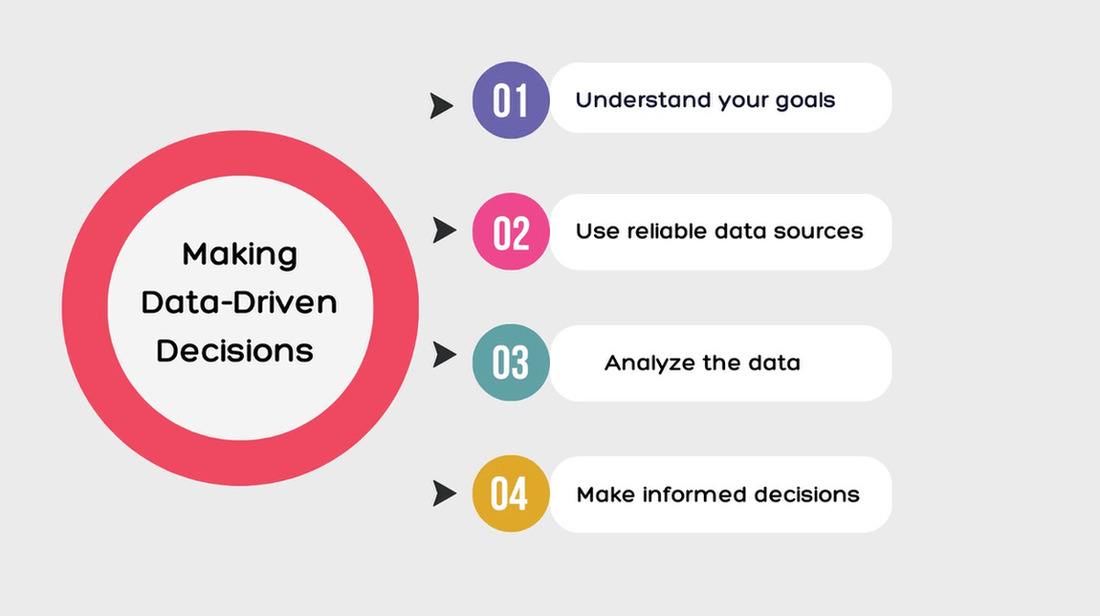
Home »
The Role of Leadership in Effective Resource Management
Explore the role of leadership in resource management. Learn how leadership drives strategic resource allocation.
Introduction
The introduction should provide an overview of the article, including a brief definition of resource management and its importance for professional services. It should also discuss the role of leadership in effective resource management, and why it is so important for leaders to be involved in this process.
Resource management is the process of planning, organizing, and managing the resources of an organization. In the context of PSA, resource management includes tasks such as:
- Identifying and prioritizing tasks
- Scheduling resources
- Tracking progress
- Managing costs
Effective resource management is essential for ensuring that PSA is used effectively and efficiently. This can help firms to achieve their goals and objectives, such as:
- Reducing costs
- Improving customer service
- Increasing productivity
- Expanding into new markets
| Introduction | Provides an overview of the article. Defines resource management and its importance in professional services. Discusses the role of leadership and its significance in resource management. |
| Resource Management | Involves planning, organizing, and managing organizational resources. Includes tasks like identifying tasks, scheduling resources, tracking progress, and managing costs. |
| Importance of Effective Resource Management | Explains the crucial role of effective resource management in utilizing Professional Services Automation (PSA). Highlights how it helps firms achieve goals, reduce costs, enhance customer service, and increase productivity. |
| Leadership’s Role | Discusses the involvement of leadership in resource management. Emphasizes that leadership plays a vital role in making resource management efficient and aligning it with the organization’s strategic objectives. |
| Why Leadership Involvement Matters | Explains why leadership engagement is crucial in resource management. Leaders provide direction, allocate resources, prioritize tasks, and ensure effective collaboration, contributing to successful project outcomes. |
The Importance of Resource Management for Professional Services

Professional services firms rely on their resources to deliver their services to clients. These resources can include people, time, money, and equipment. Effective resource management is essential for ensuring that these resources are used efficiently and effectively. This can help professional services firms to improve their profitability, customer satisfaction, and overall performance.
Resource management is the process of planning, allocating, and optimizing the use of resources such as people, time, money, and equipment in a project or organization. Resource management is especially important for professional services, which are businesses that provide specialized knowledge and skills to clients. Professional services include consulting, accounting, engineering, law, and design.
Resource management can help professional services to:
- Improve customer satisfaction and retention by delivering high-quality services on time and within budget.
- Increase profitability and efficiency by reducing waste, overstaffing, and underutilization of resources.
- Enhance employee engagement and productivity by matching their skills and preferences with the right projects and tasks.
- Gain a competitive edge and reputation by demonstrating their ability to manage complex and dynamic projects.
To achieve effective resource management, professional services need to:
- Define their goals and objectives clearly and align them with their clients’ expectations and needs.
- Identify and prioritize their available resources and assess their current and future demand.
- Implement tools and processes to monitor and control their resource allocation and utilization.
- Review and evaluate their resource performance and outcomes regularly and make adjustments as needed.
Resource management is a key factor for the success of professional services. By managing their resources wisely, professional services can deliver value to their clients and stakeholders, while also achieving their own growth and development goals
| Professional Services and Resources | Overview of professional services firms relying on resources like people, time, money, and equipment to deliver services to clients. Importance of effective resource management for improved profitability, customer satisfaction, and overall performance. |
| Definition of Resource Management | Definition of resource management as the process of planning, allocating, and optimizing the use of resources like people, time, money, and equipment. Emphasis on its significance for professional services. |
| Importance for Professional Services | Highlighting how effective resource management benefits professional services. Improved customer satisfaction, increased profitability, enhanced employee engagement, and gaining a competitive edge. |
| Achieving Effective Resource Management | Steps to achieve effective resource management in professional services. Clear goal definition, identifying and prioritizing resources, implementing tools and processes, and regular evaluation for adjustments. |
| Key to Professional Services Success | Emphasizes that resource management is a key factor for professional services success. Efficient resource management allows them to deliver value to clients, achieve growth goals, and maintain a strong reputation. |
The Role of Leadership in Effective Resource Management
Leaders play a critical role in effective resource management. They must set clear expectations for their team members, provide them with the training and resources they need to be successful, and create a culture of accountability. Leaders must also be able to measure and track performance, and make data-driven decisions. By taking these steps, leaders can help their organizations to achieve their goals and objectives.
Leadership is the ability to influence and motivate others to achieve a common goal. Leadership plays a vital role in effective resource management, which is the process of planning, allocating, and optimizing the use of resources such as people, time, money, and equipment in a project or organization.
Leadership can help to achieve effective resource management by:
- Setting a clear vision and direction for the project or organization and communicating it to all stakeholders.
- Establishing roles and responsibilities for each resource and ensuring accountability and transparency.
- Empowering and inspiring the team members to perform at their best and to collaborate and share knowledge and ideas.
- Providing feedback and recognition to the team members and celebrating their achievements and successes.
- Identifying and resolving conflicts and issues that may arise among the resources or with the clients or partners.
- Adapting and responding to changes and challenges in the internal and external environment.
Leadership is a critical skill for effective resource management. By demonstrating leadership qualities such as integrity, trust, empathy, creativity, and innovation, leaders can foster a positive and productive culture that su
Setting Clear Expectations

One of the key elements of professional services resource management is setting clear expectations for the project scope, deliverables, timeline, budget, and quality standards.
Clear expectations help align the client’s needs and expectations with the project manager’s plan and execution. They also help avoid scope creep, misunderstandings, conflicts, and rework that can negatively impact project performance and profitability.
Setting clear expectations requires effective communication and collaboration between the client, the project manager, and the project team.
It also requires documenting the project requirements, assumptions, risks, and milestones in a project charter or statement of work that is agreed upon by all stakeholders.
Providing Adequate Training and Resources
Another key element of professional services resource management is providing adequate training and resources for the project team. Training and resources include not only technical skills and tools, but also soft skills and best practices that are relevant for the project and the client’s industry.
Providing adequate training and resources helps ensure that the project team has the necessary competencies, knowledge, and confidence to deliver high-quality work that meets or exceeds the client’s expectations. It also helps reduce errors, delays, and turnover that can jeopardize project success and customer satisfaction. Providing adequate training and resources requires assessing the current and future skill gaps of the project team, designing and delivering appropriate learning interventions, and evaluating the effectiveness and impact of the training and resources.
Creating a Culture of Accountability
Another important factor in effective resource management is creating a culture of accountability. This means holding team members responsible for their actions and results. When team members know that they will be held accountable for their work, they are more likely to be motivated to perform at their best.
A third key element of professional services resource management is creating a culture of accountability within the project team. A culture of accountability means that each team member understands their roles and responsibilities, commits to their tasks and deadlines, delivers on their promises, and takes ownership of their results. A culture of accountability helps foster a sense of trust, collaboration, and empowerment among the project team. It also helps improve project performance, quality, and efficiency by reducing ambiguity, confusion, micromanagement, and blame-shifting.
Creating a culture of accountability requires setting clear and measurable goals and expectations for each team member, providing regular feedback and recognition, addressing issues and concerns promptly and constructively, and holding each team member accountable for their actions and outcomes.
Measuring and Tracking Performance

A fourth key element of professional services resource management is measuring and tracking performance throughout the project lifecycle.
Measuring and tracking performance involves collecting, analyzing, and reporting data on various aspects of the project such as scope, schedule, budget, quality, risks, issues, deliverables, milestones, customer satisfaction, etc. Measuring and tracking performance helps monitor the progress and status of the project against the planned objectives and expectations.
It also helps identify potential problems or deviations early on and take corrective actions to mitigate them before they escalate or impact the project outcome. Measuring and tracking performance requires defining key performance indicators (KPIs) and metrics for each project phase or activity, establishing baselines and targets for each KPI or metric, using appropriate tools and methods to collect and analyze data, and communicating the results to relevant stakeholders in a timely and transparent manner.
Making Data-Driven Decisions
A fifth key element of professional services resource management is making data-driven decisions throughout the project lifecycle. Making data-driven decisions means using relevant data from various sources such as performance measurement reports, customer feedback surveys, and market research studies, to inform decision-making processes such as resource allocation, prioritization, risk management
Making data-driven decisions helps optimize resource utilization by allocating resources to the most valuable or critical activities or projects. It also helps improve project outcomes by enabling more informed choices that are based on facts rather than assumptions or opinions
It requires having access to reliable data sources that are accurate, timely, and comprehensive, having a clear decision-making framework that defines who makes what decisions when, how, and why, and having a culture that supports data-driven decision-making by encouraging curiosity, experimentation, and learning from data.
Finally, leaders must be able to make data-driven decisions. This means using the data they collect to make informed decisions about how to allocate resources. By making data-driven decisions, leaders can ensure that their resources are used in the most efficient and effective way possible.

KEBS – PSA Software
By continuously improving their resource management practices, leaders can help their organizations to achieve their goals and objectives.
For that you need a All in one PSA platform which is called KEBS, Fix your revenue leakage and focus on productivity with an elevated platform throughout the lifecycle of your service.
KEBS is a Professional Services Automation (PSA) software platform designed to help businesses manage projects, resources, finances, and other operational aspects effectively. It offers features such as deal management, resource management, project management, finance management, and ticket management. The platform emphasizes providing flexibility, visibility, and finance insights across various operational facets.
- Project Management: KEBS likely offers tools to create, manage, and track projects. This might include features such as task management, project timelines, Gantt charts, and collaboration functionalities to streamline project execution.
- Resource Management: The software could help allocate and optimize resources, including human resources, to ensure that projects are adequately staffed and resources are used efficiently.
- Finance Management: KEBS might have features that allow tracking financial aspects of projects, including budgeting, expense tracking, invoicing, and revenue recognition. This can help monitor project profitability and manage financial operations.
- Deal Management: This feature could involve tracking and managing the sales process from lead generation to closing deals. It might include features like lead tracking, sales pipeline management, and deal forecasting.
- Ticket Management: If the software includes customer support or issue tracking capabilities, there could be a ticket management system to handle customer inquiries, support requests, and issue resolution.

Conclusion
Effective resource management is an ongoing process. Leaders must continuously review and improve their resource management strategies in order to meet the changing needs of their organization.
KEBS gives you the flexibility and visibility you need to manage your projects, resources and finances effectively
Achieve 2x Growth with your projects and resources from here









